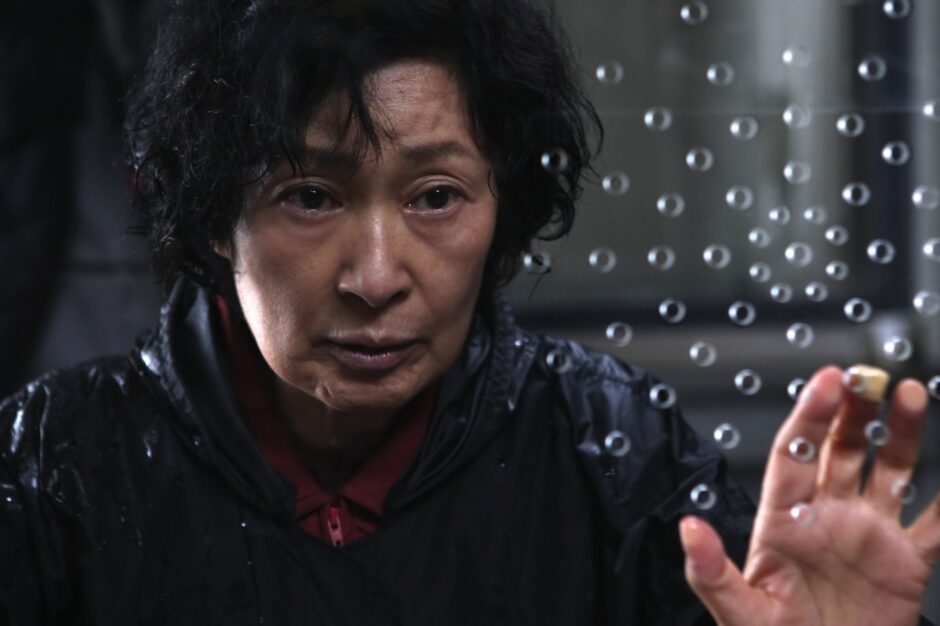review
Mother: Revisiting the South Korean Masterpiece
In one of the most memorable reveals in cinematic history, Lila Crane wanders down into the fruit cellar of the Bates’ residence to confront Norman Bates’ mother, whom she suspects is responsible for her sister’s death. Instead, she finds Norman himself dressed in his mother’s clothing, knife brandished and face twisted with frenzied glee as he charges in Lila’s direction. In a film as classic as Alfred Hitchcock’s Psycho, the scene is a standout in its own right.
Bong Joon-ho’s 2009 film Mother, by the South Korean director’s own admission, draws inspiration from Hitchcock’s idea of a mother-son duo embodying one entity. But even though themes of family and murder are shared between the two, Bong’s unique direction and storytelling establish a distinct tone that continues to set Mother apart over a decade after its release.
In Mother, which won over 40 international awards after its release, the eponymous maternal figure of the film (Kim Hye-ja) will do anything for her son, Do-joon (Won Bin). But the lengths she goes to are tested when he is detained as a suspect in the murder of a local high school girl named Moon Ah-jung (Moon Hee-ra). “You and I are one,” she says to Do-joon through the clear windowpane of the prison he has been sent to. As she breaks down in tears, she continues, “We only have each other.”
This idea permeates the entire 128-minute run time of Mother, which is the fourth film Bong directed, following internationally acclaimed hits like Memories of Murder and The Host. Although Do-joon and his mother never literally become one in the same way Norman Bates and his mother do, their lives mirror each other in almost every sense.

While Do-joon’s mother offers acupuncture services to a customer, she openly brags about him, as a mother obsessed with her son is wont to do. “His eyes are a work of art,” her customer says, agreeing with a comment about Do-joon’s good looks, “Like a deer’s.” “Like mine?” Do-joon’s mother asks, though she already knows the answer.
Frequent close-up shots show the depths of Kim’s control over her facial expressions, those deer-like eyes maintaining their wide-eyed innocence as they take in sex, violence, and other increasingly illicit activities. While Do-joon is able to forget these sins quickly due to a neurodivergence that affects his memory, the mother remembers and must continue on regardless.
Just as they live overlapping lives together, they push each other toward death together as well; Do-joon sporadically remembers bits and pieces of his life throughout the film, including the time his mother tried to poison the both of them with insecticide when he was five years old. “I should have used Gramoxone back then,” she muses later. “If I had, we would be frolicking in heaven’s flower garden right now.”
The intricate braiding of their lives only becomes more and more twisted as new secrets unfold.
Still, Bong’s artistry comes across almost too heavy-handed in this particular film — although that might also just be the natural consequence of acclimating to his style after viewing most of his works. For example, a customer pointing out that the herbs Do-joon’s mom slices “[smell] like a rotting corpse” makes it a little too obvious that the blood of another murder will spatter its way across the screen before the credits will roll.
Although Do-joon and his mother never literally become one in the same way Norman Bates and his mother do, their lives mirror each other in almost every sense.
Moreover, Mother doesn’t relinquish Bong’s habit of fridging women characters in his films, which can also be observed in Parasite, Memories of Murder, and The Host. Here, the audience isn’t offered anything about Moon Ah-jung prior to her death — not even a look at her face. Bong and co-writer Park Eun-kyo easily imbue complexity into older women like Do-joon’s mom, but the younger women of Mother face attempted rape and gross sexualizations without a purpose beyond continuing the search to find Ah-jung’s real killer.
This gendered dynamic brings about many similar themes to 2003’s Memories of Murder, which also grapples with the murder of women, though Memories brings the body count up from one to four. The film, based on real events, acts as a direct criticism of Korea’s incompetent law enforcement and their failure to identify the murderer over a 33-year time span. The final scene of Memories evokes the same feelings as the last time Do-joon’s mother enters the prison (this time to meet a different prisoner): a hopeless reflection on who doles out moral judgments, as well as a persistent sense of guilt that can never quite be fully absolved.
Near the beginning of Mother, the camera shows a high-angle shot of Do-joon’s mom pouring medicine into her son’s mouth as he urinates in an alleyway. The liquid flows like a river through his body and down the street by his feet, bringing literal embodiment to the idiom “in one end and out the other,” which highlights the cyclical nature of the film’s themes.
The mother-son duo never learn from their past, the mother only continuing to pass on overbearing and uncanny lessons on violence (“You told me if anyone insulted me, I should kick their ass.” “And if they hit you once?” “Hit back twice.”) and memory (“There’s a meridian point that can loosen the knots in your heart and clear all the horrible memories from your mind.”), all of which only add to the unhealthy codependency making up their relationship. However, the traumatic and distressing events of this latest cycle do bring about one key difference, for better or for worse: this time, there is heaven’s flower garden and there is dancing.
Curated by humans, not algorithms.
© 2025 A Good Movie to Watch. Altona Studio, LLC, all rights reserved.